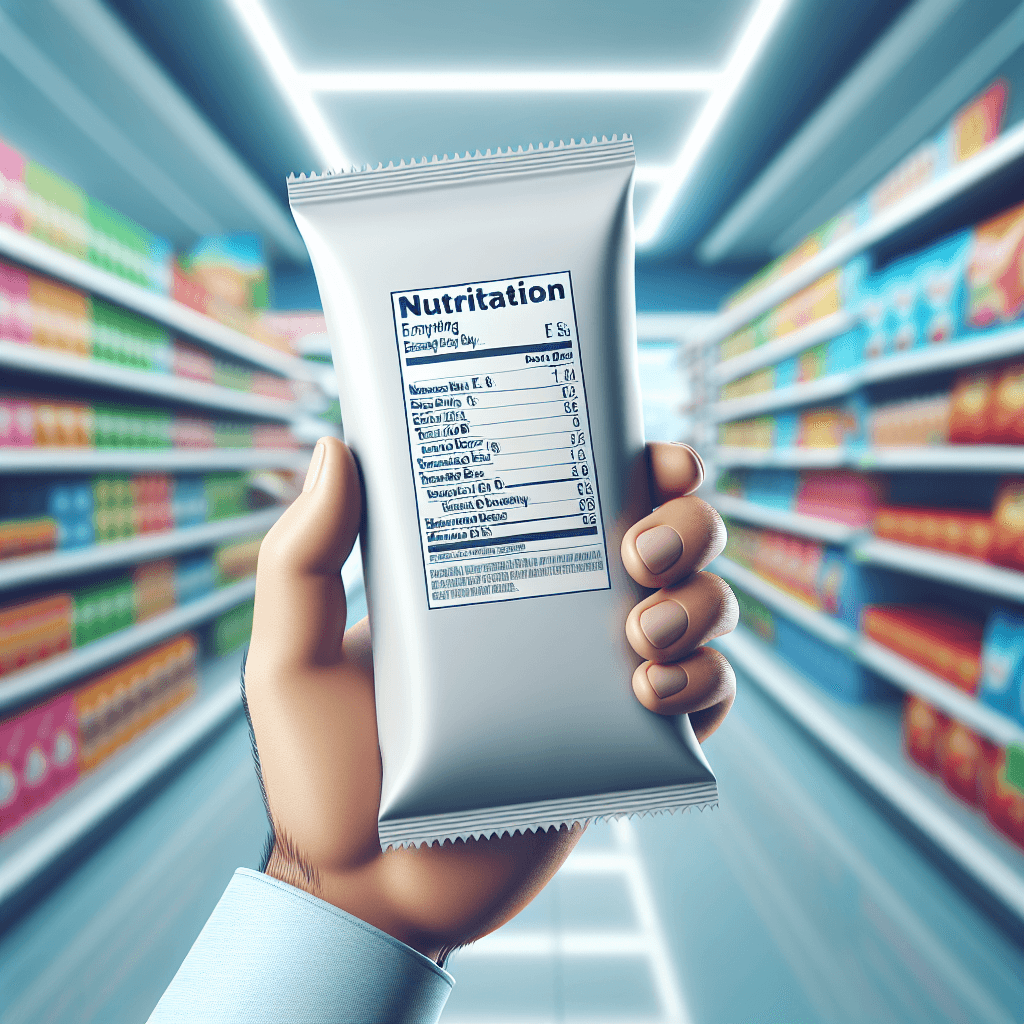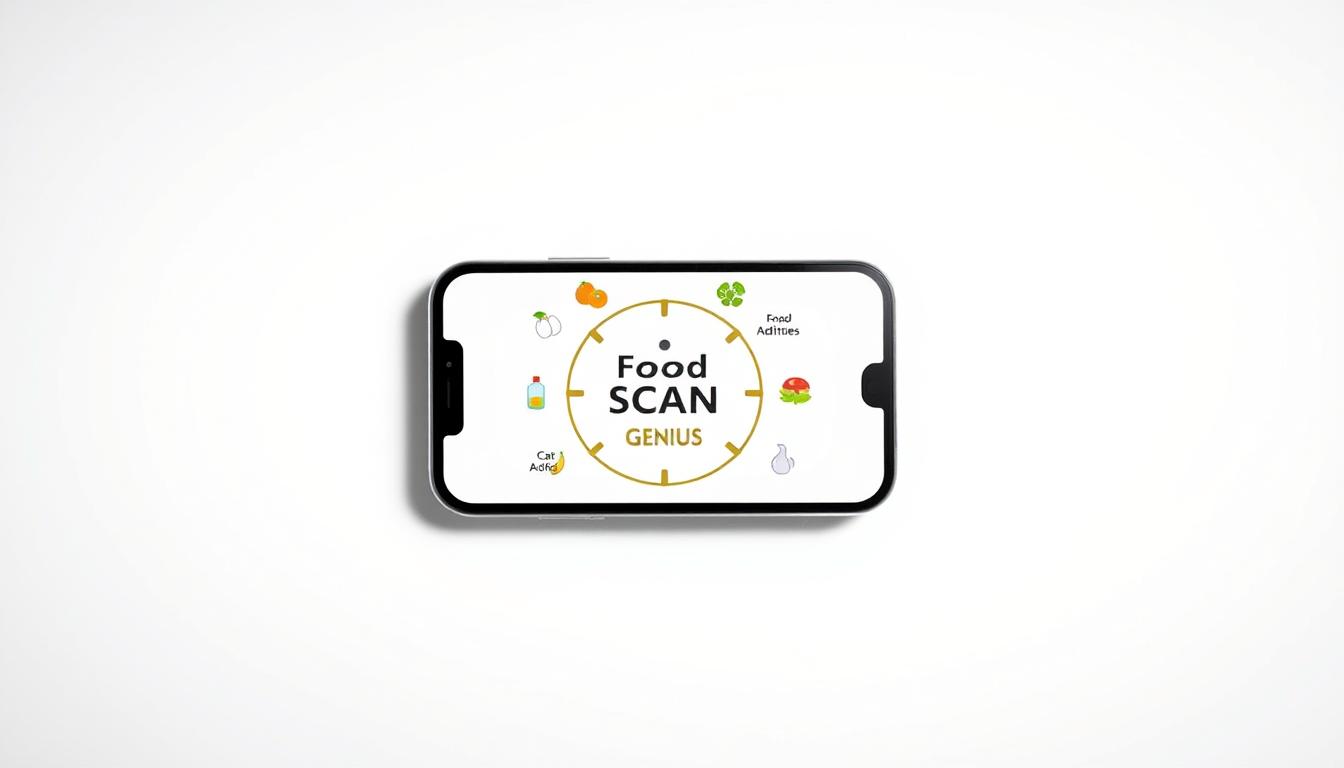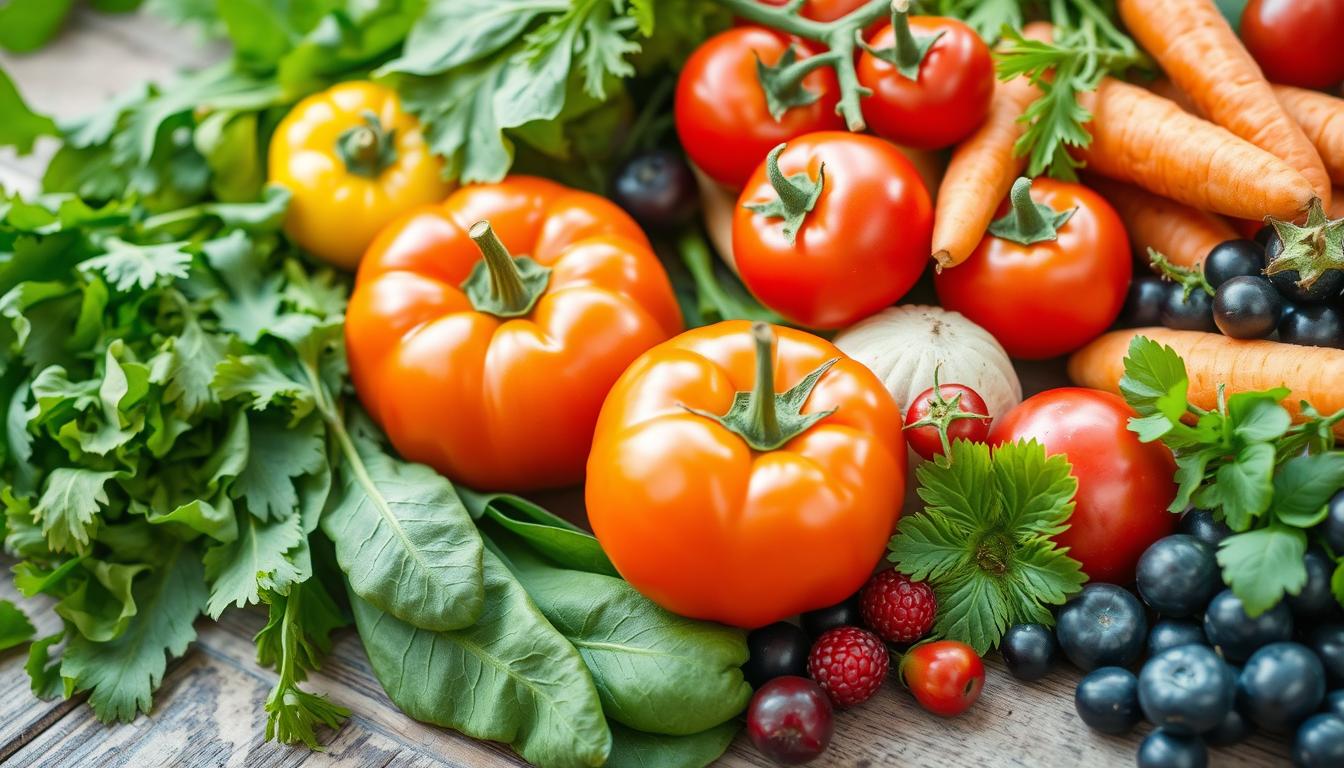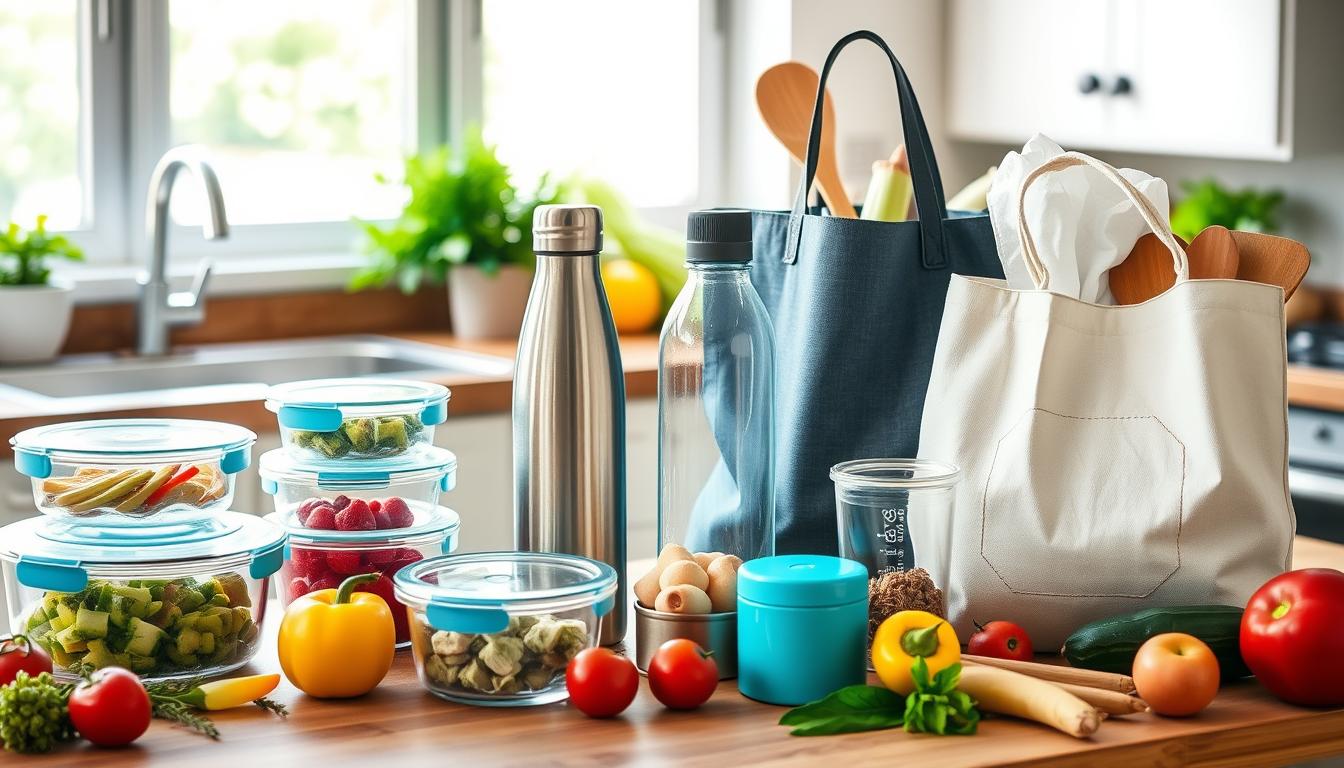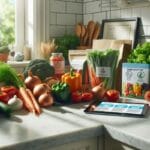Learn how to scan food labels for artificial additives and allergens. Stay ahead of 2025 food safety trends and make confident choices for your family.
How to scan food labels for E numbers
Learn how to scan food labels for E numbers in 2025 with quick tips to spot additives and make healthier choices, referencing the latest consumer trends.
Easily Identify Food Additives with This Handy Scanner App
Discover harmful ingredients instantly with a food additive scanner that decodes E-numbers and alerts you to potentially dangerous substances in your groceries and packaged foods
Natural Foods Without Synthetic Additives – Pure Eating
Did you know the average American eats over 150 pounds of synthetic additives yearly? These artificial substances in our processed foods can harm our health. But, more people are choosing natural foods without these additives. Welcome to pure eating, where we focus on whole, unaltered ingredients that are good for us and taste great. In this guide, we’ll explore natural foods deeply. We’ll look at the big differences between synthetic and natural additives. We’ll also talk about the benefits of clean labels and how to switch to a healthier diet. This article is for anyone looking to make better food choices and enjoy the benefits of eating pure, unprocessed foods. Key Takeaways The average American consumes over 150 pounds of synthetic additives per year, which can have significant health impacts. Natural foods without synthetic additives offer a range of benefits, including improved nutritional value, enhanced flavor and freshness, and better digestive health. Understanding the different types of synthetic additives and their associated health risks is crucial for making informed purchasing decisions. Identifying natural ingredients, recognizing trustworthy certifications, and supporting local farms and farmers’ markets are key strategies for incorporating more natural foods into your diet. Gradual changes, stocking your pantry with natural alternatives, and meal planning can help you successfully transition to a diet free from synthetic additives. Understanding Synthetic Additives and Their Impact Choosing healthier foods means knowing about synthetic additives. These man-made ingredients add flavor, color, or extend shelf life. But, they can affect our health. Let’s look at synthetic additives, their types, and health risks. What Are Synthetic Additives? Synthetic additives are chemicals made in labs for food. They help keep food fresh, change texture, or taste better. Foods labeled additive-free, preservative-free, non-GMO, and organic aim to use fewer of these. Common Types of Synthetic Additives Processed foods often have these synthetic additives: Artificial preservatives, like sodium benzoate and BHA, to keep food fresh Synthetic colors, such as FD&C Red No. 40 and Yellow No. 5, for looks Artificial sweeteners, like aspartame and saccharin, for sweetness without calories Flavor enhancers, like MSG, to make flavors stronger Health Risks Associated with Additives While additives are safe in small amounts, their long-term effects worry many. Research links some additives to health problems, including: Allergic reactions and sensitivities Disrupting hormonal balance Higher risks of obesity and heart disease Possible cancer risks Choosing additive-free, preservative-free, non-GMO, and organic foods reduces our exposure. This can lead to better health and well-being. “The fewer artificial ingredients in our food, the better – for our bodies, our communities, and our planet.” Benefits of Choosing No Synthetic Additives Choosing foods without synthetic additives opens up a world of benefits. These natural ingredients and whole foods improve our nutrition and taste. They also help our digestion. Improved Nutritional Value Processed foods with synthetic additives are avoided. This lets us get all the vitamins, minerals, and antioxidants from nature. Natural foods like fruits, veggies, and proteins keep their nutritional power. Enhanced Flavor and Freshness The flavors of whole foods are unmatched. They offer vibrant tastes and freshness. Each bite is full of natural goodness, pleasing our senses and nourishing our taste buds. Better Digestive Health Many synthetic additives can harm our gut health. Choosing unadulterated foods helps our digestive system. They provide fiber and nutrients that support a healthy gut. Eating pure, natural foods is not just a health trend—it’s a timeless way of nourishing our bodies the way nature intended. By choosing pure, unadulterated whole foods, we gain many benefits. We enjoy nature’s flavors and support our health and energy. Identifying Natural Foods Choosing healthier options can seem hard with all the labels out there. But don’t worry, we’re here to help. We’ll show you how to find natural foods without synthetic additives. You’ll learn to read labels and spot trustworthy certifications, making it easier to pick clean, additive-free products at the store. Reading Labels: What to Look For Start by carefully reading the label. Avoid products with artificial colors, flavors, or preservatives. Instead, look for simple, easy-to-pronounce ingredients. Stay away from long lists of chemical-sounding words, as they often mean synthetic additives to watch out for. Recognizing Natural Ingredients Choose foods with whole, plant-based ingredients like fruits, vegetables, grains, and nuts. Opt for products that are non-GMO and organic whenever possible, as these are less likely to contain synthetic additives. Look for items that boast a “clean label” – meaning they have minimal, natural ingredients without any artificial or hard-to-pronounce additions. Trustworthy Certifications and Brands To find additive-free foods, look for reliable certifications like USDA Organic, Non-GMO Project Verified, and additive-free labels. These third-party seals of approval show brands that offer clean, natural products. Brands like Whole Foods, Patagonia Provisions, and Annie’s Homegrown are known for their commitment to natural ingredients. Certification What it Means USDA Organic Indicates the product is made with certified organic ingredients, without synthetic pesticides, fertilizers, or additives. Non-GMO Project Verified Ensures the product has been rigorously tested and confirmed to be free of genetically modified organisms (GMOs). Additive-Free Signifies the product contains no artificial colors, flavors, or preservatives, only natural ingredients. By following these tips, you’ll be able to find and enjoy the natural,additive-freefoods your body needs. Popular Natural Food Brands Exploring the world of natural foods is exciting. We highlight beloved brands like Organic Valley, Whole Foods Market, and Annie’s Homegrown. They make it easy to eat foods with natural ingredients. Organic Valley Organic Valley leads in natural foods, offering preservative-free and no synthetic additives dairy products. Their milk, yogurts, and cheese are all about clean ingredients. They support local communities and the environment, focusing on natural ingredients. Whole Foods Market Whole Foods Market is a top choice for natural and organic foods. They have a wide range of preservative-free and no synthetic additives options. From fresh produce to prepared meals, they aim for quality and transparency. Annie’s Homegrown Annie’s Homegrown is loved for its family-friendly foods. They offer preservative-free macaroni and cheese, snacks, and baking mixes. Known
No BPA: Safer Alternative Products For Your Family
Did you know over 90% of Americans have BPA in their bodies? This chemical is in many products and can harm our health. It’s time to find safer options for our families. In this guide, we’ll learn about BPA and its dangers. We’ll also find safe, eco-friendly choices to replace BPA products. We’ll look at BPA-free plastics, glass, and stainless steel. Let’s work together to live a healthier, greener life. Key Takeaways BPA is a widespread chemical found in many consumer products, linked to various health concerns. Exploring BPA-free alternatives, such as glass, stainless steel, and natural fibers, can help reduce exposure. Identifying BPA-containing items in your home and making strategic replacements is crucial for a healthier environment. Choosing BPA-free baby products, food storage solutions, and eco-friendly alternatives can make a significant difference. Staying informed about BPA regulations and trends in the industry can empower you to make better-informed decisions. Understanding BPA and Its Risks Keeping our families safe means knowing about harmful chemicals. Bisphenol A, or BPA, is one such chemical. It’s linked to food safety and environmental health. We need to understand what it is, its health risks, and where it’s found in our daily lives. What is BPA? BPA is used in many products like plastic containers and food packaging. It’s strong and lasts long. But, worries about its health effects have grown. Health Concerns Linked to BPA Studies show BPA might harm health, especially in young ones and babies in the womb. It could mess with hormones, cause reproductive issues, affect the brain, and increase cancer risk. This has led many to look for safe food containers and non-toxic materials. BPA in Everyday Products BPA is in many things we use daily, like water bottles and canned food linings. Its common use worries us about long-term health effects. Knowing where BPA is helps us choose safer products. Learning about BPA helps us protect our health and loved ones. Next, we’ll look at safer options and how to make our homes BPA-free. Safer Alternatives to BPA There are now many safer alternatives to BPA. We can find BPA-free plastics, eco-friendly glass, and stainless steel options. These solutions meet our needs while keeping health and safety first. BPA-Free Plastics BPA-free plastics are a common choice. They are made without bisphenol-A. While not all are the same, they are safer for storing food and drinks. Glass and Stainless Steel Options Glass and stainless steel containers are great alternatives. They are BPA-free and last a long time. Plus, they can be recycled, helping our planet. Natural Fibers and Materials The market now offers natural fibers and materials. Bamboo, silicone, and plant-based bioplastics are popular. They are good for the environment and support sustainable living. Exploring these alternatives helps us make better choices. It keeps our families safe and supports a greener future. Every small step counts. Identifying BPA in Your Home We’re all about getting rid of harmful chemicals like BPA in our homes. First, we need to find out where BPA hides. By doing some research, we can find and replace BPA with safer options. Common Household Items Containing BPA Plastic food storage containers and water bottles Canned foods and beverages Thermal receipt paper from cash registers Certain types of cookware and dining utensils Toys, pacifiers, and other children’s products How to Check Product Labels Reading labels is crucial to find BPA-free items. Look for “No BPA” or “BPA-free” on the packaging. Stay away from products with “polycarbonate” or recycling code “PC” (number 7), as they might have BPA. Choose glass, stainless steel, or plastics with codes 1, 2, 4, or 5 instead. Recycling Code Material BPA-Free? 1 PETE (Polyethylene Terephthalate) Yes 2 HDPE (High-Density Polyethylene) Yes 4 LDPE (Low-Density Polyethylene) Yes 5 PP (Polypropylene) Yes 7 PC (Polycarbonate) No By knowing where BPA is, we can choose better, safer options. This helps us create a healthier home for our families. Choosing BPA-Free Baby Products As parents, we always want the best for our babies. Choosing non-toxic materials in baby products is key. Bisphenol A (BPA) in plastics is a big worry, especially for young kids. Luckily, there are many safe food containers and BPA-free options to keep our babies safe. Bottles and Pacifiers When picking out BPA-free baby items, bottles and pacifiers are top on the list. Look for glass or safe food containers like stainless steel or BPA-free plastics for bottles. Pacifiers should also be BPA-free for your baby’s safety. Toys and Teething Rings Teething can be tough for babies and parents alike. Choose toys and teething rings made from non-toxic materials like silicone, natural rubber, or wood. These are BPA-free and help soothe sore gums. Feeding Accessories Feeding time is important, so pick safe food containers and BPA-free items like plates, bowls, utensils, and bibs. Many brands offer non-toxic materials that are safe for your baby’s skin and stomach. Choosing BPA-free baby products helps create a healthier environment for our kids. With so many options, making safe choices for your family is easier than ever. BPA-Free Food Storage Solutions In our quest for a safer, greener living space, food storage is key. We aim to cut down on harmful chemicals like BPA. So, finding BPA-free containers for our kitchens is crucial. Let’s look at the best choices and why glass and silicone are better than plastic. Best BPA-Free Containers There are many BPA-free food storage options. Some top picks include: Glass containers with airtight lids Silicone bags and wraps Stainless steel food storage containers BPA-free plastic containers clearly labeled as “BPA-free” These containers keep our food fresh and safe. They also help us live more sustainably by cutting down on single-use plastics. The Benefits of Glass and Silicone While BPA-free plastics are good, glass and silicone are even better for safe food containers. Glass doesn’t hold onto smells or stains and is easy to clean. Silicone is flexible, durable, and naturally BPA-free, perfect for lids and bags. Both are great for meal prep, storing leftovers,


